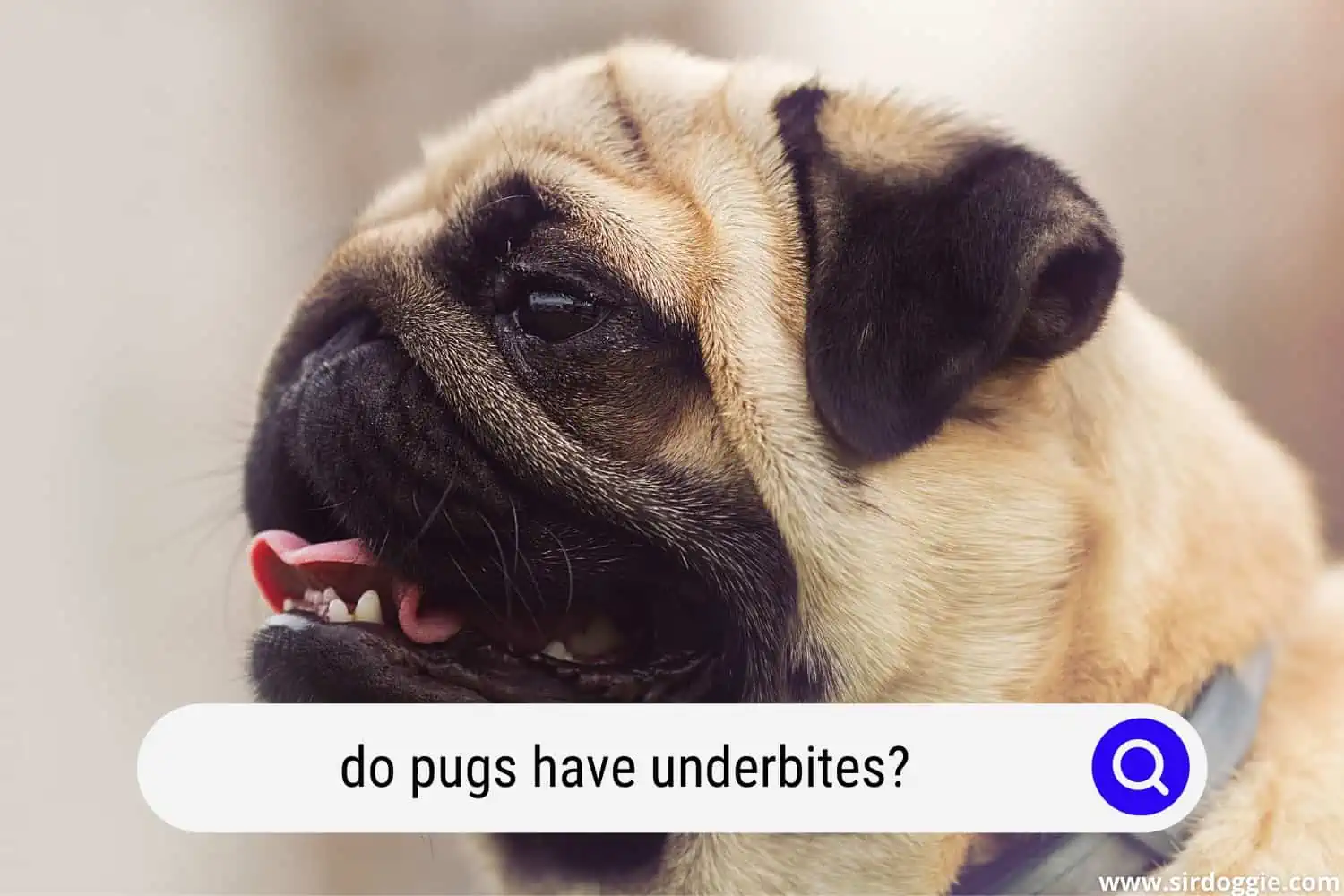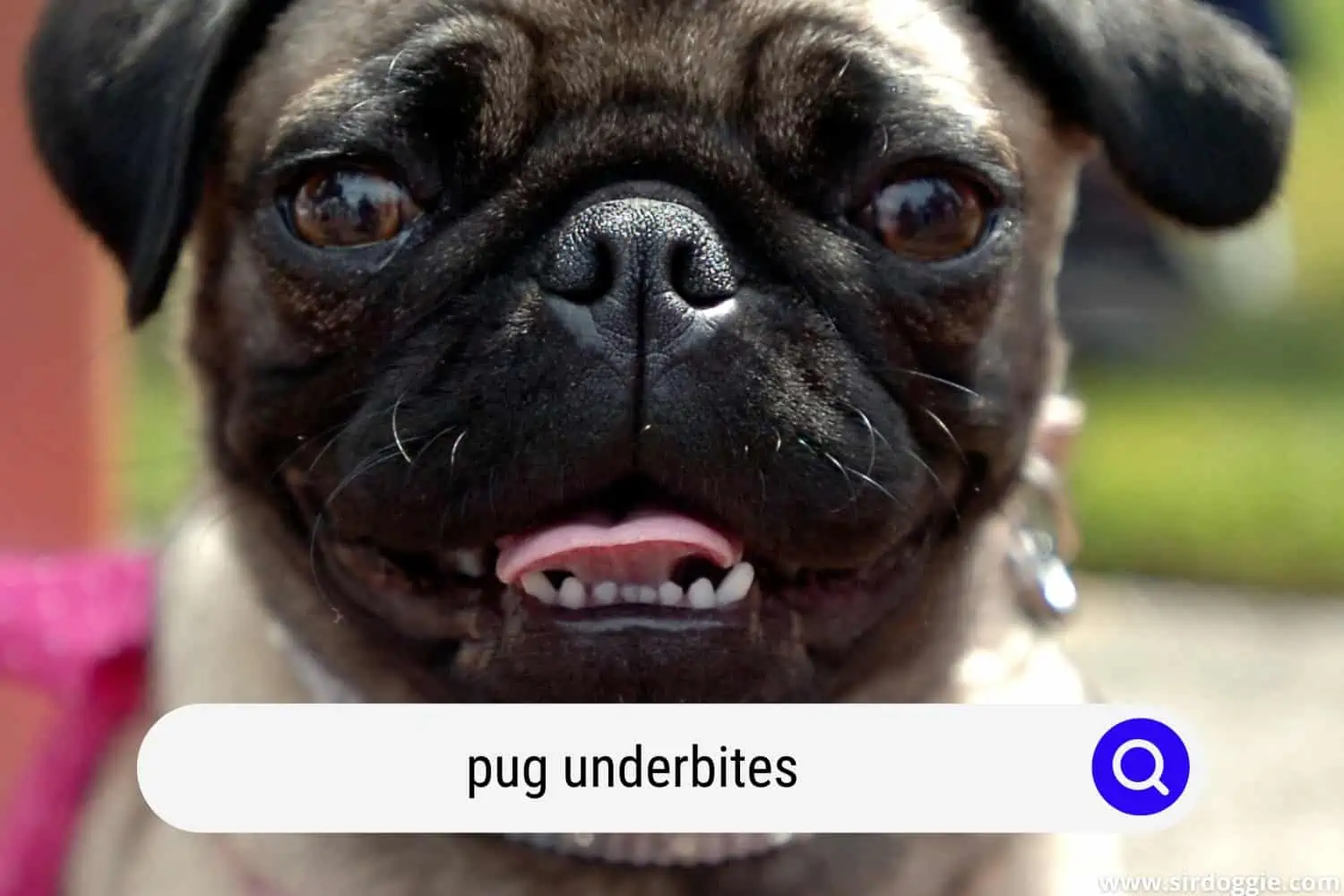Do Pugs Have Underbites? – Dental Issues In Pugs
Do pugs have underbites? Are they genetically prone to developing one, if you wonder, then we got the answer for you!

Pugs are one of the most popular pets due to their loving behavior and intriguing appearance. The Pug underbite is one of their most distinctive characteristics, and while it’s charming, it’s beneficial for a Pug owner to be aware of it.
As pugs age, they develop a small underbite, which is a breed feature. It would be unusual if your Pug didn’t have an underbite. Pugs should have a small underbite, according to American Kennel Club breeding regulations.
What Is An Underbite Dog?
When a dog’s teeth don’t fit together properly, whether they’re baby teeth or adult teeth, it’s known as a canine underbite. Determining whether a dog has a dog underbite can be difficult since, unlike people, a dog’s bite does not have a typical appearance.
The layout of the teeth for every kind of breed is different. Some breeds have pointy mussels and some have their jaws wide and short. So, for a pug, it’s normal to have a slight underbite. According to the A.K.C., it’s normal for pugs to have a slight underbite. In other words, it’s in their genetics.
If your dog has tooth-to-tooth or tooth-to-soft tissue contact that shouldn’t be there, that’s clinically meaningful dog underbite, which can relate to erosion or tissue damage.
So, if the underbite of your dog is making the teeth grind between them or the gums touch each other, you should seek medical help. Underbite on its own won’t produce health problems. However, if the underbite leads to soft tissue biting in your dog, surgery might be needed to fix that problem.
How Does Pug Teeth Diagram Look?
When we talk about the pug teeth, we must mention their layout. The skull of the Pug is unique and that is due to its genetics. So, like every other dog, the pug has 42 adult teeth. Due to the anatomy of the Pug skull, you can expect a slight underbite when looking at the Pug teeth diagram.
The teeth of the pug come in four types, there are 12 incisors. The incisors are the front tiny teeth, these play the biggest part in a pug underbite. Next to them are the canines, they are 2 on the top jaw and 2 on the bottom. After that, as we get to the edge of the jaw there are the premolars, which are 16.
Lastly, at the end of the jaw, you can spot the molars. The molars are the adult core teeth, and the Pug has 10 of them. If the space between the two sets of incisors is over half a centimeter, that is considered a bad underbite and needs medical attention.
Pugs With Underbites – Why Does It Occur?
Knowing the most likely reason why a Dog underbite occurs can assist you in reducing it and preventing a recurrence. The underlying causes for dogs with underbites are generally one or more of the following:
- Genetics: The most evident reason for pugs underbites is genetics. Because the issue is genetic, a dog with an underbite has a good probability of passing down the genes to future generations. This is especially true in the case of brachycephalic breeds such as the Pugs.
- Puppies normally have 28 deciduous teeth, often known as milk teeth. These eventually will get replaced by permanent teeth, and your Pug will have 42 permanent teeth by the time they reach maturity. Milk teeth are not always lost and instead continue to develop alongside adult teeth. The underlying reason for a small underbite might be this.
- Behavioral factors: There’s a chance that the underbite develops into a behavioral component. For example, when a teething puppy tugs at garments, ropes, and other objects while playing tug-of-war, causing the adult teeth to move out of their normal alignment position.
It’s worth noting that a puppy’s biting set may alter as the dog grows older. Many Pugs are born with a level bite, which changes into an underbite as the dog matures.
Prominent underbites during the early puppy phase should be monitored since the lower jaw typically continues to grow after the upper jaw has attained its full maturity.
A particularly noticeable underbite in Pugs should be evaluated by a veterinarian regularly. Otherwise, misalignment, also known as malocclusion, can impact eating and cause jaw pain.
Unless you want to use your Pug in a breeding operation, there is no need to be worried if your Pug does not have the traditional slight underbite. In some cases, a flawed bite would be passed down to subsequent litters since a dog’s bite set is a hereditary feature.
Dental Hygiene In Pugs
All dogs require at-home dental care as well as professional dental treatment. Plaques develop whenever your Pug consumes food. It’s a sticky, transparent material that sticks to your Pug teeth. You can’t completely prevent it by letting your Pug gnaw on toys or snacks.
So, it hardens into tartar (also known as calculus) after three days, making it considerably more difficult to remove.
The tartar can build up and damage the teeth of your Pug even if you can’t notice. Why is that? Because tartar can go under the gums develop infections and damage the roots of the teeth.
We will give you some recommendations that you should practice so you avoid any further dental problems.
1. Brush your Pug’s teeth
Brushing your Pug teeth is one of the most efficient ways to eliminate plaque, keep them clean, and avoid bad breath. Although not all Pugs will sit calmly and quietly for this, it is worth the effort since a dog may quickly develop and adapt to the teeth-brushing process.
Some Pugs can develop a taste for the canine toothpaste and/or appreciate the gum massage components of it.
2. Use diet supplementation
Dental supplement products for dogs come in a variety of forms, with the majority advertised as a replacement for brushing or to be used in conjunction with it.
Some may also aid in the prevention of foul breath. However, this is usually due to plaque reduction rather than as a substitute. Sprays, liquid supplements given to a dog’s water, wipes, and powders added to food are examples of dental aids.
3. Give daily dental treats
Offering a dental chew may be highly effective regardless of whether you brush or not, how often you brush, or if you utilize a supplement. This is a type of consumable chew that can help loosen and eliminate plaque. Because the dental chews are designed to be difficult to digest, all Pugs should be monitored when they use them.
While they don’t have a lot of nutritional content, they do have a decent number of calories, so it’s preferable to give one to a Pug every day instead of dry snacks.
4. Do veterinarian dental exams
Lastly, it’s best to do regular veterinarian dental exams. These will assure you that your Pug oral hygiene is at a high level and no further health problems will develop. We recommend at least one veterinarian appointment every 3months.

Conclusion On The Question: Do Pugs Have Underbites?
Pugs are genetically prone to developing underbite. So, do pugs have underbites? Yes, they do! However, that doesn’t make them any less beautiful and adorable than other breeds. For a pug, it’s normal to have a slight underbite, if the underbite doesn’t lead to larger health problems you don’t need to worry.
But, if the opposite occurs, always consult with your veterinarian, and ask them for advice regarding your Pug’s health.
If you have any other tips about Pugs and their underbites, comment and share them with other proud Pug owners!

Family Dog Expert Author
Hi there! I’m Stuart, a devoted dog lover and family dog expert with over a decade of experience working with our furry companions. My passion for dogs drives me to share my knowledge and expertise, helping families build strong, loving bonds with their four-legged friends. When I’m not writing for SirDoggie, you’ll find me hiking, playing with my beautiful dog, or studying music.